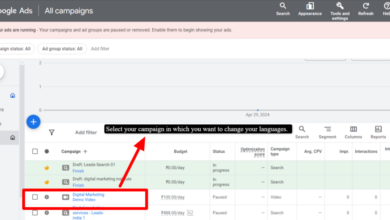
Site Reputation Abuse A Deep Dive
Site reputation abuse is a growing concern for individuals and businesses online. It involves malicious activities designed to damage a website’s or company’s reputation through various tactics. This ranges from fake reviews and coordinated negative comment campaigns to more subtle forms of social engineering. Understanding these tactics, their impact, and methods of prevention is crucial in today’s digital landscape.
This exploration delves into the intricate world of site reputation abuse, examining its various facets, from the motivations behind such attacks to the devastating consequences they can inflict. We’ll analyze the methods used, the effectiveness of different strategies, and ultimately, equip readers with the knowledge to safeguard their online presence.
Defining Site Reputation Abuse
Site reputation abuse is a pervasive online threat that involves malicious actions aimed at damaging the reputation and credibility of a website or online entity. This can range from subtle smear campaigns to full-blown coordinated attacks, causing significant harm to businesses, individuals, and organizations. It’s crucial to understand the various forms and motivations behind such attacks to effectively mitigate and respond to them.Reputation abuse leverages the power of online communities and the spread of information to undermine trust and credibility.
It often involves the creation of false or misleading information, the manipulation of reviews, and the exploitation of social media platforms to spread harmful content. The goal is often to tarnish the reputation of the target, deter customers, damage relationships, or achieve a specific political or financial gain.
Forms of Site Reputation Abuse
Understanding the various forms of site reputation abuse is critical to effectively combatting these attacks. These tactics often target the website’s public image by creating false or misleading information.
- Fake reviews and testimonials: Creating fabricated positive or negative reviews, testimonials, or user-generated content to influence public perception. This is a common tactic as it can sway public opinion, and is particularly effective on platforms that rely heavily on user feedback.
- Spreading false information: Disseminating fabricated news articles, blog posts, or social media posts that portray the target in a negative light. This can involve creating fake accounts or using bots to amplify the spread of misinformation.
- Social engineering: Manipulating individuals into spreading negative information about the target. This could involve exploiting vulnerabilities in human psychology to trick people into posting negative comments or reviews.
- Harassment and abuse: Using abusive language, threats, or harassment tactics to discourage users from interacting with the target or create a hostile online environment. This can range from simple insults to sophisticated campaigns of abuse.
- Copyright infringement and plagiarism: Creating content that falsely infringes on intellectual property or plagiarizes material to damage the target’s credibility or reputation.
Motivations Behind Reputation Attacks
The motivations behind site reputation abuse can vary greatly, depending on the attacker’s goals and the specific circumstances.
- Financial gain: An attacker may aim to damage the reputation of a competitor to gain market share or discourage customers from doing business with the target.
- Political motivations: In some cases, attacks are politically motivated, aiming to discredit individuals or organizations that oppose the attacker’s views.
- Personal vendettas: Personal animosity or grievances can drive individuals to engage in reputation attacks.
- Extortion or blackmail: Reputation attacks can be used as a tool to pressure the target into complying with the attacker’s demands.
- Cybercrime: Attackers may use reputation attacks as part of a larger cybercrime campaign, aiming to steal data or disrupt operations.
Key Characteristics of Reputation Abuse
Distinguishing reputation abuse from other online threats requires understanding its key characteristics. Unlike simple cyberattacks, reputation abuse focuses on manipulating public perception and eroding trust.
- Focus on public image: Reputation abuse primarily targets the target’s public image and the trust associated with it.
- Dissemination of misinformation: It relies on spreading false or misleading information to damage the target’s credibility.
- Exploitation of online platforms: It leverages the reach and influence of online communities and social media platforms to amplify the attack.
- Sustained campaign: Reputation attacks are often part of a larger, sustained campaign rather than a single isolated incident.
Comparing Different Types of Reputation Attacks
Comparing different types of reputation attacks highlights their unique characteristics and effectiveness.
| Attack Type | Description | Example |
|---|---|---|
| Fake Reviews | Fabricating positive or negative reviews to manipulate perception. | Creating fake customer reviews on a product website. |
| Spreading Misinformation | Disseminating false information to damage reputation. | Creating and spreading fake news articles about a company. |
| Social Engineering | Manipulating individuals into spreading negative information. | Using a phishing campaign to obtain personal information and then use it to spread negative information about the target. |
Impact of Site Reputation Abuse
Site reputation abuse, whether through malicious reviews, fabricated complaints, or orchestrated smear campaigns, has devastating consequences for individuals and organizations. It erodes trust, damages reputations, and can even cripple businesses. The impact extends far beyond simple negativity; it creates a cascade of problems with tangible financial and psychological costs.The repercussions of such abuse are multifaceted, affecting everything from personal relationships to global market standing.
This exploration delves into the various ways in which site reputation abuse harms individuals and organizations, demonstrating the insidious nature of online attacks and the importance of robust defense mechanisms.
Detrimental Effects on Individuals
Reputation is a crucial asset in the modern world. A tarnished reputation can make it difficult to secure employment, find housing, or even maintain healthy relationships. Online abuse can result in a loss of credibility and professional opportunities. The damage extends beyond the professional sphere, impacting personal well-being and self-esteem. Victims may experience anxiety, depression, and feelings of isolation.
The constant scrutiny and negativity can erode confidence and lead to a sense of helplessness.
Harm to Business Operations
Site reputation abuse can severely impact a company’s bottom line. Negative reviews and fabricated complaints can deter potential customers, leading to a decline in sales and revenue. Loss of customer trust and confidence directly translates to decreased market share. Businesses may also face increased costs associated with addressing the negative publicity and repairing their damaged image. This can include hiring public relations firms, engaging in damage control strategies, and implementing measures to improve online reputation.
Psychological Impact on Victims
The psychological impact of site reputation abuse is profound and often underestimated. Victims may experience feelings of shame, anger, and helplessness. The constant barrage of negativity can lead to anxiety, depression, and a decline in self-esteem. They may struggle with the perception of being unfairly targeted and lose confidence in their abilities and judgments. Moreover, the lack of control over the narrative can be particularly damaging.
Negative Consequences on Company Image and Market Share
A company’s reputation is a critical component of its brand value. When a company faces reputation abuse, its image suffers, often leading to a significant drop in market share. This can result in decreased investor confidence, making it more difficult to secure funding and potentially impacting the company’s long-term viability. Negative reviews, if left unaddressed, can create a domino effect, resulting in lost customers, reduced sales, and a damaged brand image.
Impact on Public Trust and Confidence
Site reputation abuse undermines public trust in online platforms and the information shared on them. The proliferation of fake reviews and misleading information erodes the integrity of online marketplaces and communities. Consumers become increasingly skeptical about the authenticity of online content, which impacts their willingness to engage in online transactions and interactions. The erosion of trust can extend to the wider societal level, influencing how individuals view institutions and online communication channels.
Site reputation abuse is a serious issue, impacting businesses and individuals alike. It’s crucial to understand the strategies employed to damage online credibility. A great resource for learning about effective digital content strategies, and how to combat reputation damage, is Kelly Jacobson, a digital content specialist at JAR Digital. Kelly Jacobson digital content specialist shares valuable insights into creating and maintaining a positive online presence, which is key to preventing reputation abuse.
Ultimately, understanding how to build a strong online image is paramount in today’s digital landscape.
Methods and Techniques of Site Reputation Abuse
Online reputation is increasingly vital for businesses and individuals. Malicious actors, however, understand its power and often exploit it through various methods of abuse. These tactics can range from subtle manipulations to overt attacks, making detection and mitigation challenging. Understanding these techniques is crucial for anyone seeking to protect their online presence.
Manipulating Reviews, Site reputation abuse
Review manipulation is a common tactic. Fabricated reviews, both positive and negative, can significantly skew public perception. Creating false profiles to leave reviews is a simple method, while more sophisticated approaches involve using bots to generate a flood of reviews. A company might find its star rating plummet, with fabricated negative reviews significantly impacting sales. This is especially damaging to small businesses that rely heavily on online visibility.
Negative Comment Campaigns
Orchestrated campaigns of negative comments aim to damage a target’s reputation. These campaigns often involve coordinated efforts from multiple users. They might exploit social media groups or forums to spread negative information, potentially using bots to amplify the effect. The speed and scale of such attacks can be difficult to counter.
Social Engineering
Social engineering exploits human vulnerabilities. Attackers might manipulate individuals into revealing sensitive information or taking actions that harm the target’s reputation. Phishing emails, for instance, might impersonate trusted entities to obtain login credentials or spread false information. This technique can be employed to target both individuals and businesses, leading to data breaches or the creation of false reviews.
Site reputation abuse is a serious issue, impacting trust and ultimately, conversions. Slow loading times can significantly hurt a site’s credibility, as users are less likely to engage with a sluggish platform. A faster site, on the other hand, is a huge plus. For instance, how page speed affects conversion rate is directly linked to a positive user experience.
This means a faster website builds trust and encourages more conversions, which directly counteracts the negative effects of reputation abuse. So, even though site reputation abuse is a tricky issue, addressing it often comes down to the fundamentals, like page speed.
Automated Attacks
Automated tools are frequently employed in site reputation abuse. Bots and scripts can be used to generate fake reviews, spam comments, and spread misinformation at an accelerated pace. These attacks can be difficult to detect, as the volume of automated activity can overwhelm human moderators.
Using False Profiles
Creating fake social media profiles and online personas can be part of a wider strategy to damage a target’s reputation. These profiles can be used to post negative comments, spread misinformation, or even impersonate the target to manipulate their followers.
Site reputation abuse is a real problem, impacting trust and potentially damaging businesses. Think about how the platform has evolved, and how its use has changed over time. Understanding the history of social media platforms like Facebook, like this infographic showcasing the history of Facebook the history of facebook infographic , can help us understand the nuances of how these platforms are used and potentially abused.
This insight can better equip us to address and prevent reputation damage.
The Subtlety of Attacks
Many reputation abuse methods are designed to be subtle and difficult to detect. Instead of a massive, overt attack, malicious actors often employ a series of smaller, seemingly innocuous actions. These subtle attacks can be harder to track and address, as they often lack a clear, singular point of origin.
Comparing Reputation Abuse Tactics
| Attack Method | Description | Impact | Detection Difficulty |
|---|---|---|---|
| Fake Reviews | Creating false reviews to damage a business’s rating. | Reduces customer trust, lowers sales. | Moderate |
| Negative Comment Campaigns | Orchestrating a coordinated effort to post negative comments. | Damages reputation, spreads misinformation. | High |
| Social Engineering | Manipulating individuals to provide false information or perform actions. | Potentially leads to data breaches or reputation damage. | Variable |
Prevention and Mitigation Strategies

Protecting your online reputation is an ongoing effort, not a one-time fix. It requires a proactive and multifaceted approach, including consistent monitoring, robust response mechanisms, and a proactive community building strategy. Just like safeguarding your physical assets, protecting your online reputation requires vigilance and preparedness.Effective reputation management isn’t just about reacting to attacks; it’s about anticipating potential issues and building resilience to withstand them.
A well-defined protocol for responding to attacks, coupled with a proactive monitoring system, forms a powerful defense against damaging narratives. Furthermore, building positive online communities helps to mitigate the impact of negative feedback.
Proactive Monitoring Strategies
Proactive monitoring is crucial for identifying potential reputation threats before they escalate. This involves continuously tracking online mentions, reviews, and discussions related to your brand or individual. Sophisticated tools can automatically alert you to negative comments or trends, allowing for timely intervention. Regular monitoring ensures that any negative narrative is identified and addressed swiftly. The speed of response is vital in minimizing damage.
Robust Review Management Systems
Establishing a robust review management system is a cornerstone of effective reputation protection. This system should include clear guidelines for handling reviews and feedback, whether positive or negative. A well-defined process for responding to reviews, both positive and negative, fosters transparency and demonstrates your commitment to customer satisfaction. Responding to negative reviews with empathy and a genuine desire to resolve issues can transform a negative experience into a positive one.
Building and Managing Online Communities
Building and nurturing positive online communities is a powerful strategy for reputation management. Engaging with customers, fans, and stakeholders online can create a supportive environment where positive narratives are amplified. Actively engaging in online conversations and providing helpful information can shape the perception of your brand. This proactive approach can significantly influence the overall sentiment associated with your brand.
| Prevention Strategy | Description | Effectiveness |
|---|---|---|
| Proactive Monitoring | Continuously tracking online mentions and reviews. | High |
| Robust Review Management | Establishing a system for handling reviews and feedback. | Moderate |
| Establishing Online Communities | Creating positive online communities to counter negative narratives. | High |
Responding to Reputation Attacks
A well-defined protocol for responding to reputation attacks is essential. This protocol should Artikel procedures for identifying, assessing, and addressing negative narratives. This includes clear roles and responsibilities for individuals involved in the response process. A swift and decisive response, demonstrating empathy and a willingness to address concerns, can significantly mitigate the damage caused by a reputation attack.
Examples of Successful Responses
Numerous companies have successfully navigated reputation crises by employing a well-defined crisis communication plan. For instance, a company facing accusations of unethical practices can swiftly issue a statement acknowledging the concerns and outlining steps being taken to rectify the situation. A genuine apology and a commitment to change can often restore trust. Another example is a retailer responding to a social media backlash about poor customer service by immediately implementing a system to improve customer interaction.
The company also offered apologies and incentives for affected customers.
Importance of a Crisis Communication Plan
A crisis communication plan is crucial for navigating reputation attacks. This plan should Artikel procedures for handling various types of crises, including negative reviews, social media storms, and public accusations. A pre-defined plan ensures that your response is coordinated and effective. It is vital to have a dedicated team, pre-determined messaging, and a clear channel for communication during a crisis.
Having a clear strategy in place will limit the damage and speed up the recovery process.
Legal and Regulatory Frameworks
Navigating the online world requires a keen understanding of the legal boundaries surrounding reputation management. Site reputation abuse, while often perceived as a gray area, can trigger serious legal consequences. Understanding the relevant laws and regulations, and the challenges in enforcing them, is crucial for both individuals and organizations operating online. Knowing your rights and responsibilities within this complex landscape is essential for protecting your reputation and preventing costly legal battles.The legal landscape surrounding online reputation management is constantly evolving.
As new technologies and platforms emerge, so too do the legal frameworks designed to address the challenges they pose. This necessitates a continuous effort to stay informed about the latest developments in legislation and case law. This awareness is critical for maintaining a safe and healthy online environment for everyone.
Legal Ramifications of Site Reputation Abuse
Site reputation abuse can lead to a range of legal repercussions, ranging from civil lawsuits to criminal charges. The specific legal ramifications depend heavily on the nature and severity of the abuse, including the false statements made, the damage caused, and the intent behind the actions. Defamation, slander, libel, and potentially violations of privacy laws can result from intentional or reckless online falsehoods that harm an individual or organization’s reputation.
Relevant Laws and Regulations Governing Online Reputation Management
Numerous laws and regulations at both the national and international level touch upon online reputation management. These laws often overlap and address issues such as defamation, privacy, intellectual property, and consumer protection. Some jurisdictions have specific legislation targeting online falsehoods and the spreading of malicious content. Understanding the scope of these laws and their application in specific situations is vital.
For example, the Communications Decency Act in the US provides some protection for online platforms from liability for user-generated content. However, this protection does not extend to content that violates other existing laws. International regulations also play a crucial role in determining legal accountability for online reputation abuse, as online activity often transcends geographical boundaries.
Examples of Legal Actions Taken Against Reputation Abuse
Numerous instances demonstrate the legal consequences of online reputation abuse. In some cases, individuals and organizations have successfully sued those who have spread false and damaging information online. These actions have led to court orders requiring the removal of defamatory content, compensation for damages, and even injunctions preventing further harmful actions. For example, a business harmed by a coordinated campaign of negative reviews might pursue legal action against the perpetrators to recover financial losses and to restore its reputation.
Similarly, individuals targeted by online harassment or defamation could pursue legal recourse to protect their reputation and personal well-being.
Challenges in Enforcing Online Regulations
Enforcing online reputation regulations presents significant challenges. The global nature of the internet, the anonymity often afforded by online platforms, and the speed at which information spreads pose substantial hurdles. Jurisdictional issues often complicate legal proceedings, as determining the appropriate court and applicable laws can be difficult. Identifying and holding accountable those responsible for reputation abuse can be challenging, particularly in cases where individuals operate behind pseudonyms or from jurisdictions with weak enforcement mechanisms.
Moreover, the sheer volume of online content makes it difficult to identify and address harmful material in a timely and effective manner.
Resources for Seeking Legal Recourse
Accessing legal assistance for online reputation abuse can be complex. Consulting with a qualified lawyer specializing in online defamation or reputation management is recommended. Many legal aid organizations and online resources provide information about available legal options. Finding the right legal professional to address your specific situation is essential. It’s also important to document all evidence related to the reputation abuse, including screenshots, timestamps, and any communication records, as this documentation will be crucial in a legal proceeding.
Seeking legal counsel early can significantly increase the likelihood of success in mitigating online reputation damage.
Case Studies of Site Reputation Abuse
Understanding the real-world impact of site reputation abuse requires examining specific incidents. These case studies provide crucial insights into the tactics employed, the resulting damage, and the effectiveness of various response strategies. By analyzing past attacks, we can better prepare for and mitigate future threats.The following case studies highlight diverse scenarios of site reputation abuse, showcasing the wide range of tactics used and the varied consequences faced by different organizations.
They demonstrate how these attacks can range from subtle smear campaigns to large-scale coordinated efforts.
Case Study 1: The “Fake Review” Campaign
This case involved a competitor targeting a small online restaurant. Over a period of several weeks, false and negative reviews flooded the restaurant’s online platforms. The reviews falsely accused the restaurant of food contamination, poor service, and unsanitary conditions.The tactics employed in this campaign included creating fake user accounts, using automated tools to post reviews, and even leveraging social media bots to amplify the negative feedback.The impact on the restaurant was severe.
Sales plummeted by 40% in the affected period, causing significant financial strain. The restaurant’s reputation, built over years, was severely damaged, and customer trust eroded. The restaurant responded by actively disputing the fake reviews, providing detailed responses to criticisms, and working with review platforms to remove the fraudulent content.
Case Study 2: The “Phishing” Attack Targeting Online Retailers
This involved a coordinated phishing campaign targeting multiple online retailers. Attackers used sophisticated email templates and websites that mimicked legitimate retailer platforms to trick customers into revealing their login credentials.The attackers then used the stolen credentials to make unauthorized purchases, potentially causing significant financial losses to the retailers and damaging customer trust.The impact on the retailers was significant, encompassing not only financial losses but also the cost of investigating and remediating the security breach.
The reputational damage included loss of customer confidence and potential legal repercussions. Some retailers responded by implementing stricter security protocols, offering credit monitoring to affected customers, and initiating public awareness campaigns about phishing.
Case Study 3: The “Malicious Website” Campaign
This involved the creation of a malicious website designed to mimic a legitimate company’s site. The attackers used the cloned website to capture sensitive customer data, such as credit card information and personal details.The tactics employed included registering a domain name similar to the legitimate company’s, replicating the website’s design, and strategically targeting the company’s customer base. The impact on the affected entity was severe, encompassing the potential for financial losses and reputational damage.
Customers lost confidence in the company, and legal ramifications could be substantial. The company responded by implementing robust security measures, notifying affected customers, and working with law enforcement to identify and prosecute the attackers.
Comparison of Responses
| Case Study | Response Strategy | Effectiveness |
|---|---|---|
| Fake Review Campaign | Disputing reviews, providing detailed responses, working with review platforms | Moderate, required significant effort and resources |
| Phishing Attack | Implementing stricter security protocols, offering credit monitoring, public awareness campaigns | High, mitigated potential losses and maintained customer trust |
| Malicious Website Campaign | Implementing robust security measures, notifying affected customers, working with law enforcement | High, prevented further data breaches and protected customers |
The effectiveness of responses varied significantly depending on the nature of the attack and the resources available to the affected entity. The proactive and swift response in the phishing and malicious website cases demonstrably reduced the damage.
Last Recap: Site Reputation Abuse

In conclusion, site reputation abuse is a complex issue demanding a multi-faceted approach. Protecting online reputations requires a proactive strategy, encompassing vigilant monitoring, robust review management, and a well-defined crisis communication plan. Understanding the legal frameworks surrounding these attacks and learning from real-world case studies is vital in the ongoing fight against this damaging trend. Ultimately, understanding and mitigating site reputation abuse is not just about safeguarding reputations, but also about building trust and fostering a safer online environment.




